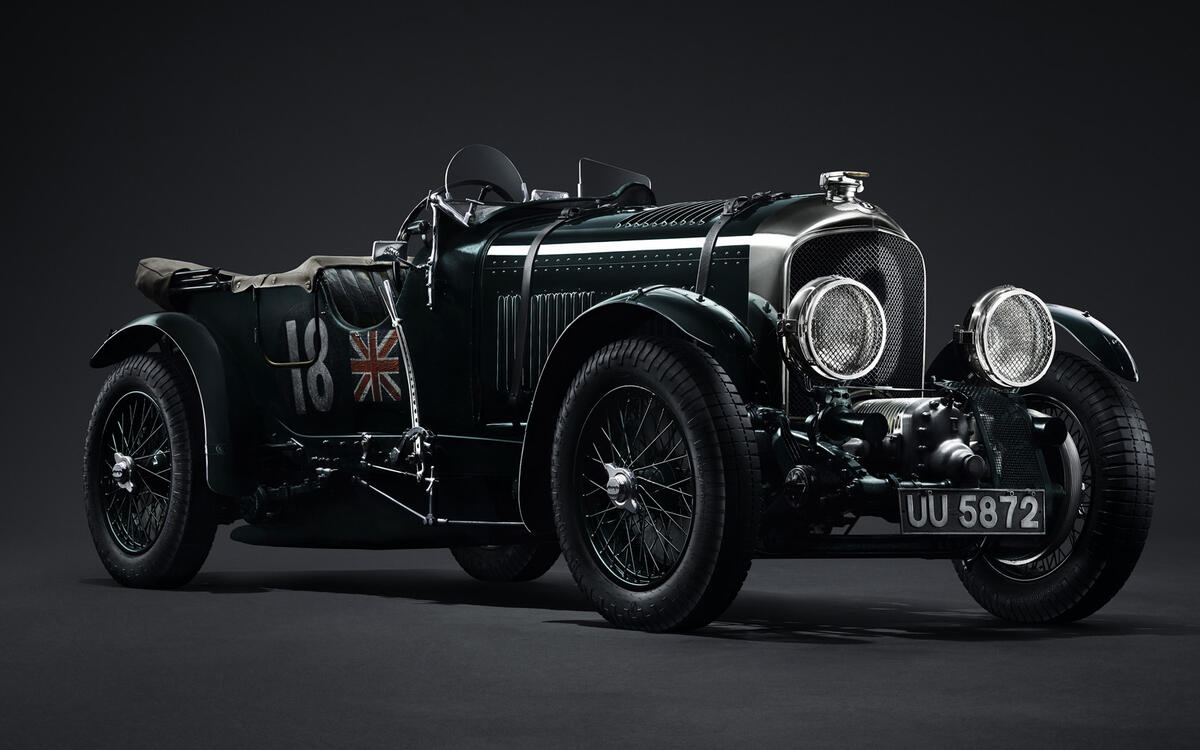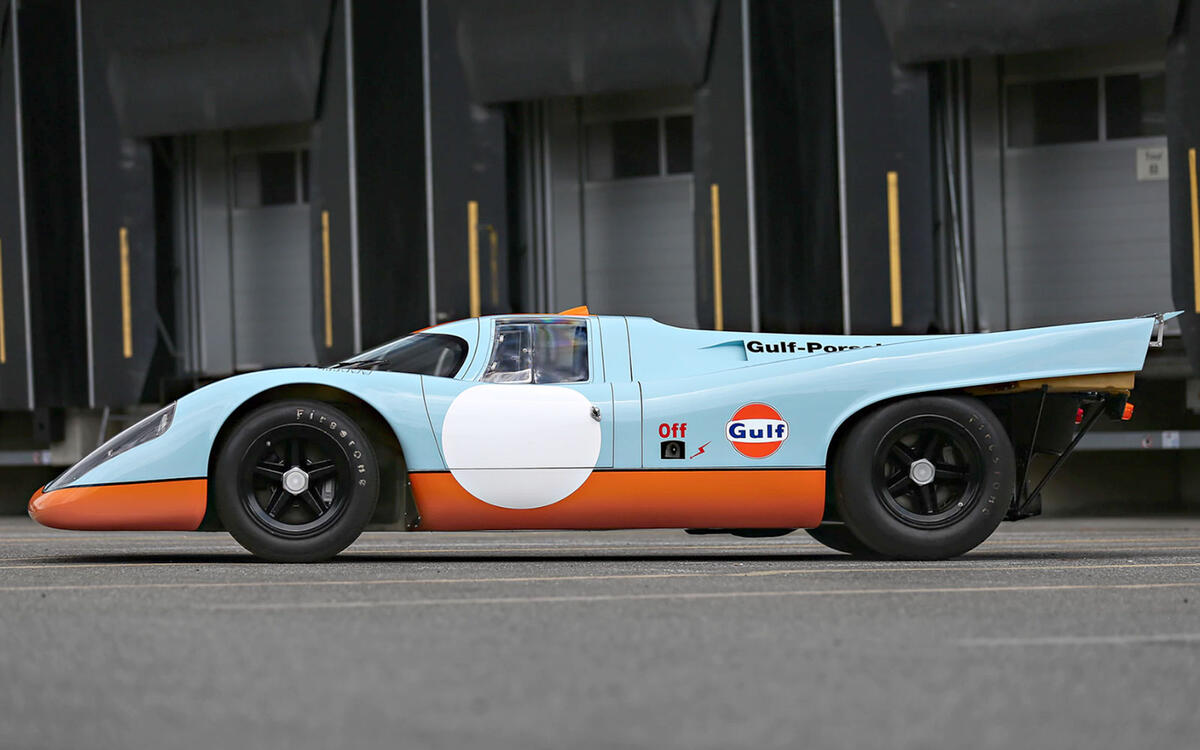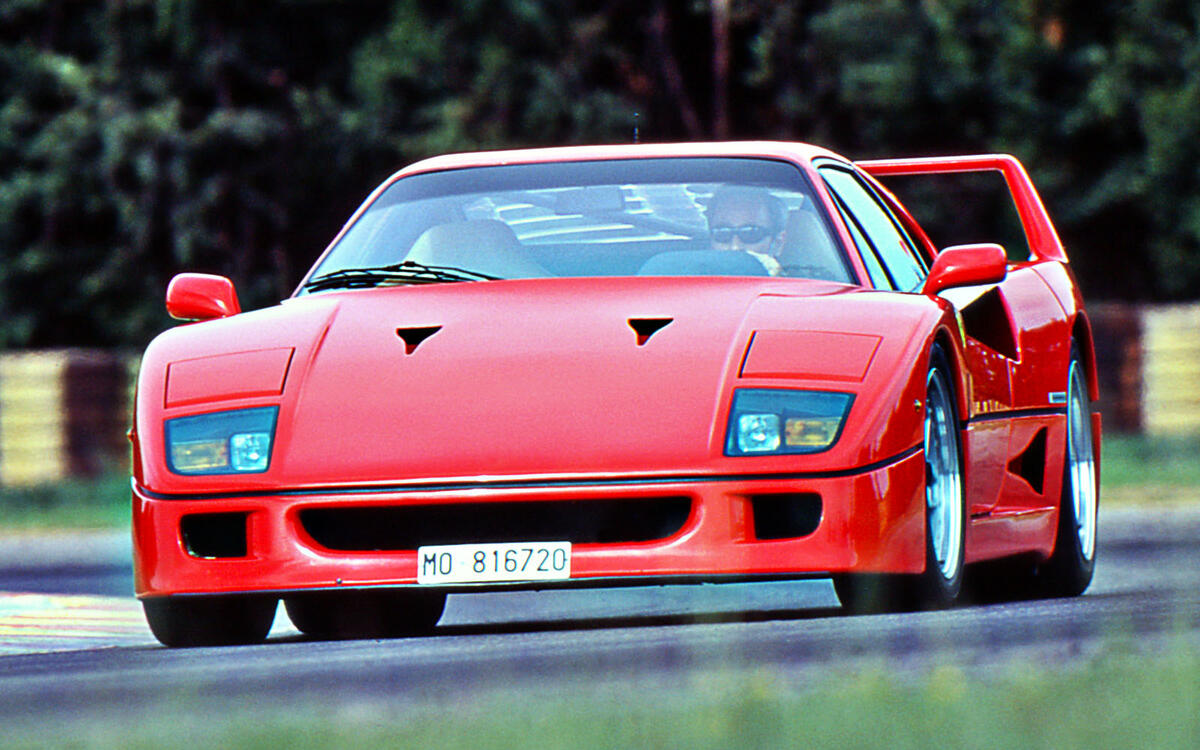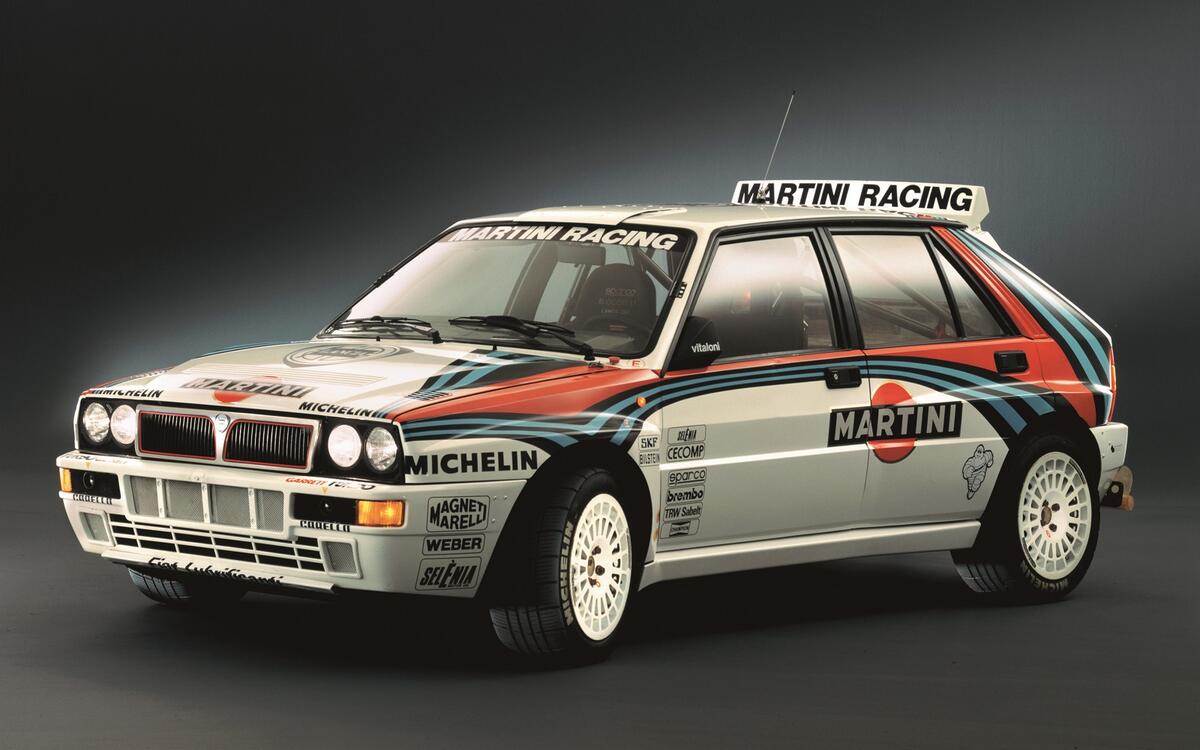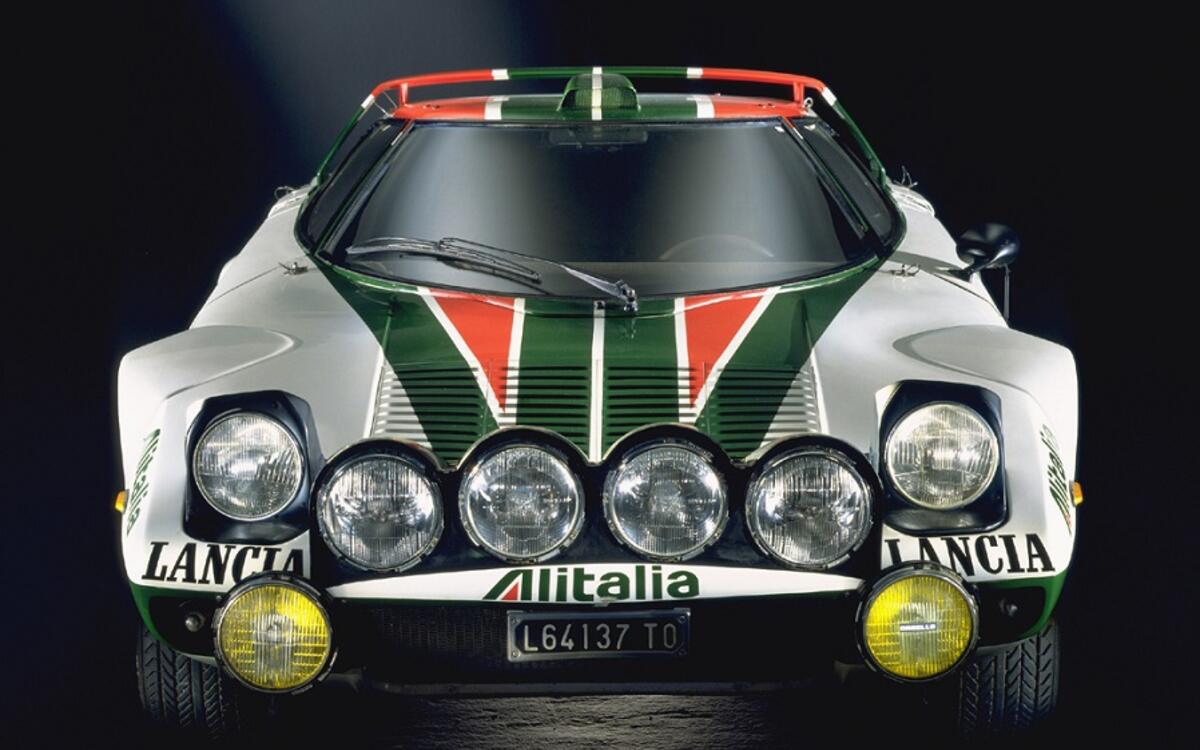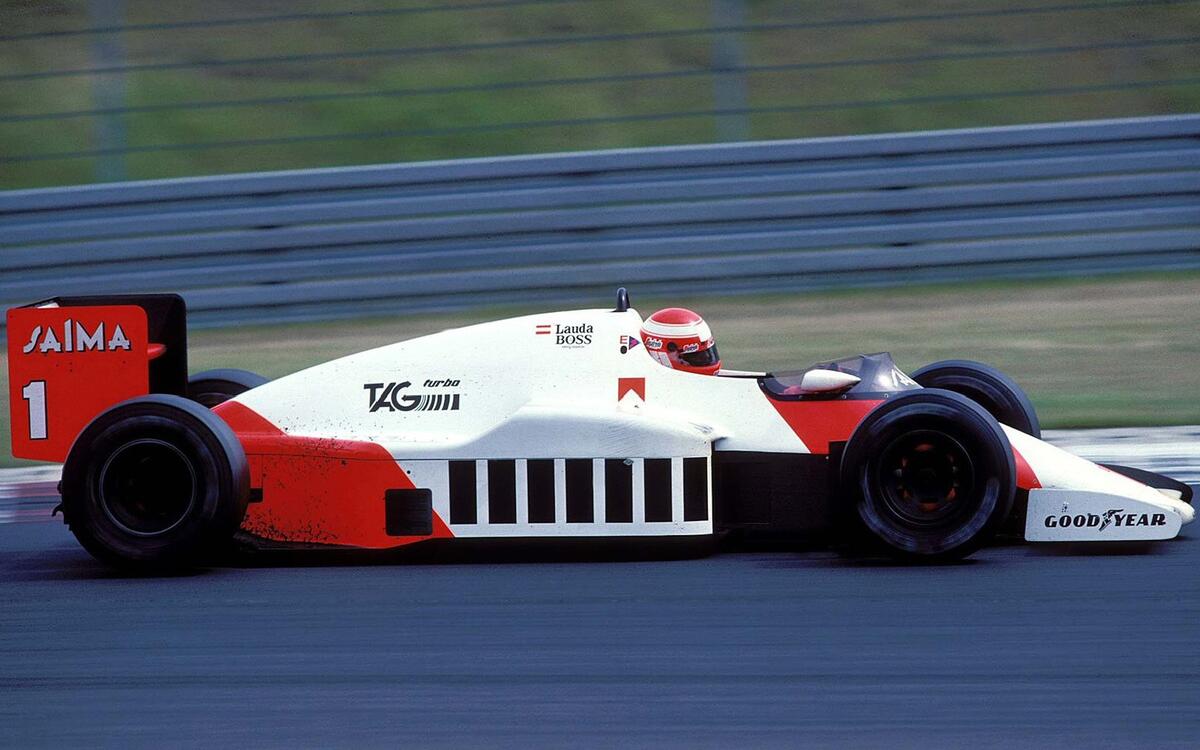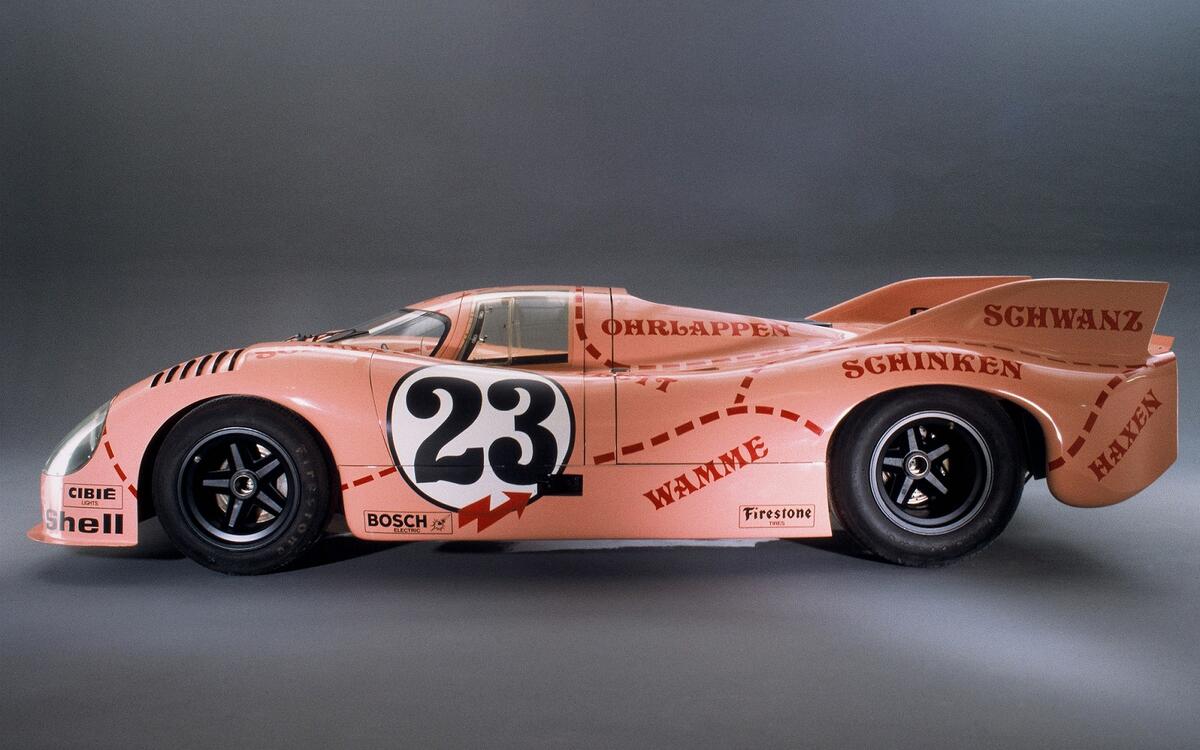 Slide of
Slide of
What makes an iconic livery?
For some, it’s all about racing success and for others, it could be fame on the big screen. Whatever it takes, there are many paint jobs that stand out in the memory. Here, we’ve listed the best paint liveries to grace bodywork from road, racing and rally cars - but which is your favourite?
 Slide of
Slide of
British Racing Green
As motorsport became popular in the early part of the 20th Century, national racing colour were adopted and Great Britain took on green. The reason for this stemmed from an international race held in Ireland in 1902. As Ireland was part of the United Kingdom at that time, green was chosen for the Napier cars out of respect for the Irish location.
This light green changed in shade depending on which manufacturer was using it and, by the 1920s, it had become a much darker colour used by Bentley. After the Second World War, Jaguar continued with a dark British Racing Green, while Aston Martin preferred a much lighter metallic hue for its DB racing models.
 Slide of
Slide of
Gulf Racing
In a world where instant brand recognition is the Holy Grail, America's Gulf Oil had this sorted back in the 1960s. Its famous blue and orange livery quickly became synonymous with endurance motorsport success, especially at Le Mans where the colours adorned first Ford GT40 and then Porsche winners of the 24 Hour event.
However, the Gulf Racing livery was derived from the Wilshire Oil Company’s pallet. In the 1960s, Gulf’s own dark blue and orange was considered too dull by the management to stand out on the track, so when the firm bought Wilshire it adopted its hues and the rest is history. That’s a history that includes the colours being used on Ford, Mirage, McLaren, Aston Martin and Porsche racers.
 Slide of
Slide of
Ferrari red
Red and Ferrari is a classic combo and it’s been that way since the early days of the firm’s racing activities. Over the years, though, the colour red has been open to interpretation by Ferrari, especially as colour television was introduced and the company wanted a red that stood out more onscreen.
It all started with Rosso Corsa, or racing red, which has been the basis for all factory race cars. With increased television coverage, this became a brighter, more orange hue, but at the 2007 Monaco Grand Prix Ferrari made a return to the deeper original shade and has stuck with it ever since. The only deviations from this have been on the rare occasions the F1 cars have sported black nosecones: firstly to mark the terrorist attacks of September 2001, and the death of Pope John Paul II in 2005.
 Slide of
Slide of
Alan Mann Fords
If the Lotus Cortina became famous for its white and green design, the Alan Mann Racing team made just as big a mark on later Ford models. They included the GT40, Escort and Cortina, all finished in the firm’s distinctive gold over red hues.
Alan Mann (1936-2012) also ran an aviation business alongside his motor racing team in the 1960s and ’70s. However, for an unknown reason, he used a black, white and yellow livery for his helicopters rather than the red and gold he was famous for on the track.
 Slide of
Slide of
Audi Quattro
As if the Audi Quattro was not enough of a sensation when it arrived on the scene in 1980, the rally version came with an equally stand-out paint scheme. Rather than being festooned with multiple sponsors’ stickers, Audi kept it simple with a white base and red, white and black strips on the bonnet, roof and C pillars.
It certainly grabbed attention and also clearly stated Audi’s intention to put the Quattro front and centre in its bid to promote all-wheel drive as the future. Over time, the colour scheme was adapted to suit sponsors, with later rally cars sporting a broad yellow stripe down the flanks. However, the definitive colour scheme was back in 1988 for the stunning 200 Quattro Trans-Am racer.
 Slide of
Slide of
Ford Mustang Highland Green
Few films have had a greater influence on a single model of car than the movie Bullitt has on the Ford Mustang. All the elements were there to catapult this car to stardom, from Steve McQueen as the lead actor and driver of the Ford to the superb car chase through San Francisco. Yet that subtle metallic green shade capped it perfectly.
Demand for Mustangs in Highland Green rocketed after the movie hit the big screen, though the GT390 Fastback used in the film remained a rare model. In 2001, Ford resurrected the colour for a special edition Bullitt model. It made more appearances in 2008 and 2009, and then again in 2019.
 Slide of
Slide of
BMW Gosser Bier CSL
It doesn’t get more German than a BMW race car run by Schnitzer team and sponsored by homegrown brewer Gosser Bier. Together, this trio put up an almighty fight in the 1976 European Touring Car Championship and were certainly the most visible thanks to the bright green and striped colour scheme of the 485bhp CSL.
Although the BMW Schnitzer team eventually had to give best to Porsche in the championship, it was the CSLs of Dieter Quester and Ronnie Peterson that stood out in fans’ memories. The simple scheme and minimal sign writing were made for television coverage, while the spectacular antics on-track were just as eye-catching.
 Slide of
Slide of
Lancia Delta Martini
There’s a long line of cars that have sported the Martini red and blue livery, but few are evocative as the Lancia Delta that took on the world’s rally stages. Both during the infamous Group B era and the Group A period that followed, the Delta’s squared-off styling lent itself to showing off its sponsor’s colours to perfection.
The Delta wasn’t Martini’s first foray into rallying as it had backed Porsche in 1978. Yet it was the venture with fellow Italian company Lancia that garnered Martin the global exposure it wanted. With first the Lancia 037 and then the hugely successful Delta in all its forms, it made household names of the likes of Didier Auriol, Juha Kankkunen and Marku Allen.
 Slide of
Slide of
Lancia Stratos Alitalia
Alitalia was a natural fit for the Lancia Stratos when it went rallying. Here was Italy’s national airline paired with the country’s frontline rally team. Even so, the distinguishing colour scheme was actually the work of a German designer, Walter Landor (1913-1995), who had been commissioned by Alitalia to create its corporate identity.
When transferred to the wedge shape of the Stratos, the green and red on a white base was an instant hit. It helped that Landor’s original brief also demanded the design was easily applied to different aircraft, so it was simpler to work on to the Lancia. It also helped the Stratos proved very successful on rallies around the world.
 Slide of
Slide of
Lotus JPS
Lotus was no stranger to iconic colour schemes on its race cars, from the early British Racing Green with yellow stripe to the Gold Leaf colours used in the late 1960s. There’s one, though, that stands out above all others and it’s the John Player Special black and gold livery that Lotus Formula 1 cars sported between 1972 and 1978.
In an era where tobacco money was prevalent in F1 racing, Lotus took it to an all-new level by flogging merchandise to fans. The company plane was decked out in black and gold and you could also buy an Esprit road car in the team colours. It shows how far ahead company boss Colin Chapman was when it came to branding and understanding the impact a great livery could have on the sport and public.
 Slide of
Slide of
Mazda 787B Le Mans
There’s a lot that’s special about the Mazda 787B Group C race car. Among them is the eye-popping livery that was used on just one of the cars entered in the 1991 Le Mans 24 Hours. It was painted in the arresting colours of clothing manufacturer Renown, with the green and orange segments meant to look like fabric swatches stitched together.
As luck would have it, this unusually painted Mazda went on to win Le Mans in 1991 and the colour scheme gained worldwide attention. So, alongside its win as the only Japanese car to do so at that point and the only Le Mans winner with a rotary engine, it also spawned an MX-5 limited edition finished in the same bold green and orange pattern. Each of these MX-5s came with a signed certificate of authentication from Johnny Herbert, who was one of the Le Mans-winning drivers.
 Slide of
Slide of
McLaren
Between 1974 and 1996, when tobacco advertising was permitted in Formula 1, McLaren had one of the sport’s most easily spotted liveries. You didn’t need to know much about motor racing to know which team this was thanks to the bold, simple red and white paint scheme that stood out perfectly as the world swapped to colour televisions from old black and white sets.
McLaren barely deviated from the same basic scheme across a 23-year deal with Marlboro. However, a white and yellow livery was painted on Keke Rosberg’s car in 1986 to raised eyebrows. The distinctive colours were also used on an Alfa Romeo F1 car in 1980, albeit in a different layout to McLaren’s.
 Slide of
Slide of
MG Metro 6R4 Computer Vision
There are plenty of colour schemes that we could pick for the pugnacious MG Metro 6R4, but the one that sticks in the mind most is the blue and white Computervision motif. It said a lot that Austin Rover struck a deal with a sponsor from the pioneering world of computer aided design as the 6R4 was a car built from high tech materials.
It also helps this livery that it is so closely associated and remembered being driven by Tony Pond. He was an incredibly talented rally driver who gave the Metro its first victory in the 1985 Skip Brown Gwynedd Rally and finished just ahead of an Audi Quattro, the car that inspired the 6R4’s inception.
 Slide of
Slide of
Mini Cooper S
The British Motor Corporation (BMC) has been using a white roof over a red body for its Austin-Healey rally cars, but it took a while to adopt the livery for the iconic Mini Cooper S rally machines. The first instance of a Cooper S in this colour scheme come from keen competitor Bill Rogers. After loaning his Mini to a friend, it came back damaged and the paint shop offered to respray the roof a different colour to the red body. Rogers asked for white as this would help reflect heat from the cabin.
BMC used the red and white colour scheme from 1962 and also used red with a black roof. The red colour was chosen, according to legend, because cars in that colour were more likely to be waved on by police officers during rallies through European countries.
 Slide of
Slide of
Opel Manta Heat for Hire
This assured colour scheme was not just closely associated with the Opel Manta 400 but also its driver, Russell Brookes. The double British Rally Champion struck up his relationship with Andrews Heat for Hire in 1974 and it lasted throughout the remainder of Brookes’ impressive career.
Over 17 years, Brookes and his sponsor were a prominent and popular sight on rally stages. During that time, the Opel Manta 400 that Brookes drove with such gusto became an icon for rally fans. His title win in the 1985 British Rally Championship sealed the yellow, red and blue livery in the affections of enthusiasts.
 Slide of
Slide of
Parmalat
For a company that made its money in the food and dairy business, Italy's Parmalat had a huge influence on Formula 1 with its blue and white colours. Like so many of the best liveries, it was a simple design that made it stand out. Even so, it was two years after Parmalat had started to sponsor Brabham that its iconic colours appeared in 1980 when Alfa Romeo departed.
The design that emerged in 1980 quickly gained plenty of television coverage as Nelson Piquet used the Gordon Murray-designed BT49 to great effect. With BMW engines arriving in 1982, the colours were adapted on the Brabham’s nose cone to replicate the kidney grille of BMW’s road cars.
 Slide of
Slide of
Plymouth Roadrunner STP
Success was snatched from the jaws of disaster at the very last moment for Richard Petty (born 1937) and his NASCAR racing team. With no main sponsor as they headed to the first race of the 1972 season, he took a last shot with American oil and fuel additive supplier STP. The gamble paid off and the white, red, and blue STP logo became synonymous with Petty’s race cars.
For STP, the deal was equally beneficial as Petty went straight out and won the first race of the year in his Plymouth Roadrunner. He also went on to win seven more that season and lift the championship title. As a mark of just deep-seated the relationship became, STP changed the liveries of other race cars it sponsored to mirror Petty’s due the success this pairing enjoyed.
 Slide of
Slide of
Porsche Pink Pig
One of the most unusual and amusing paint schemes ever to adorn a car was born out of a joke. The rumour is Porsche endurance racing sponsor Martini was so horrified by the 1971 917/20’s looks, they refused to allow it to wear their own iconic colours. So, designer Anatole Lapine (1930-2012) was allowed to come up with his own design and he made a visual play on the car being described as a ‘pig’.
Taking the idea from a butcher’s chart of different cuts of meat on a pig, Lapine bisected the 917 with broken lines and named each section of bodywork. Unintentionally, it created one of the most recognisable Porsche liveries ever. As for the car itself, it ran as high as fifth place in the 1971 Le Mans 24 Hours but had to retire due to accident damage.
 Slide of
Slide of
Subaru Impreza 555
Few paint schemes have jumped from motorsport to roadgoing cars more than Subaru’s World Rally Championship get-up. The dark blue base made it hugely popular with the fans eager to own a slice of the car that made Colin McRae’s name and saw him battle with team-mate Carlos Sainz throughout 1995.
Along with the tobacco firm’s lettering down the side, the other stand-out feature of the livery were the gold wheels. On almost any other car, they would have looked naff, but the Impreza made them look cool in a way no other car has ever since. Even the earlier Legacy RS used for rallying in the same colours doesn’t quite carry it off with the same panache as the more compact Impreza.
If you enjoyed this story, sign up to Autocar’s newsletter for all the best car news, reviews and opinion direct to your inbox. Click here to subscribe.
We all have a favourite car colour scheme – both for racers and road cars. We reckon these are the most famous of them all
Advertisement

